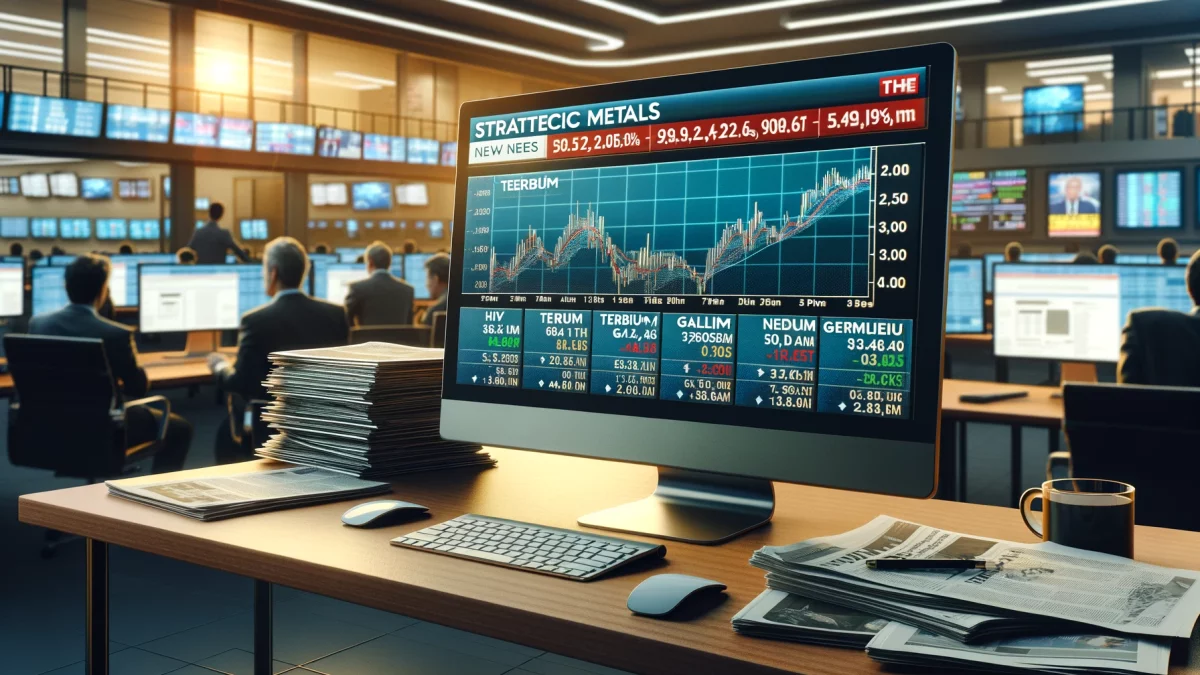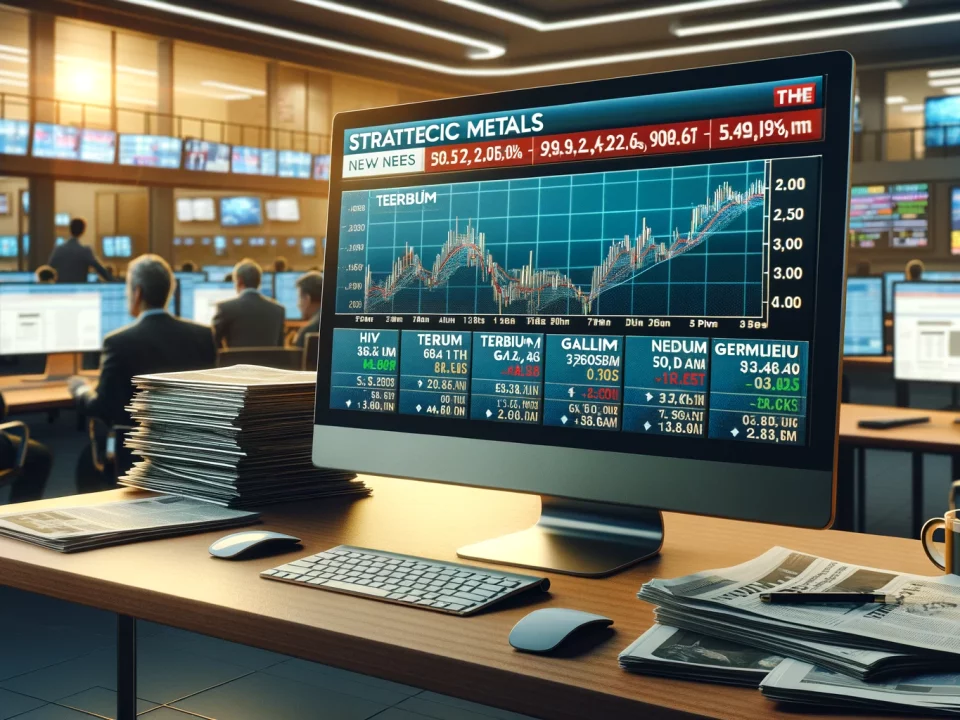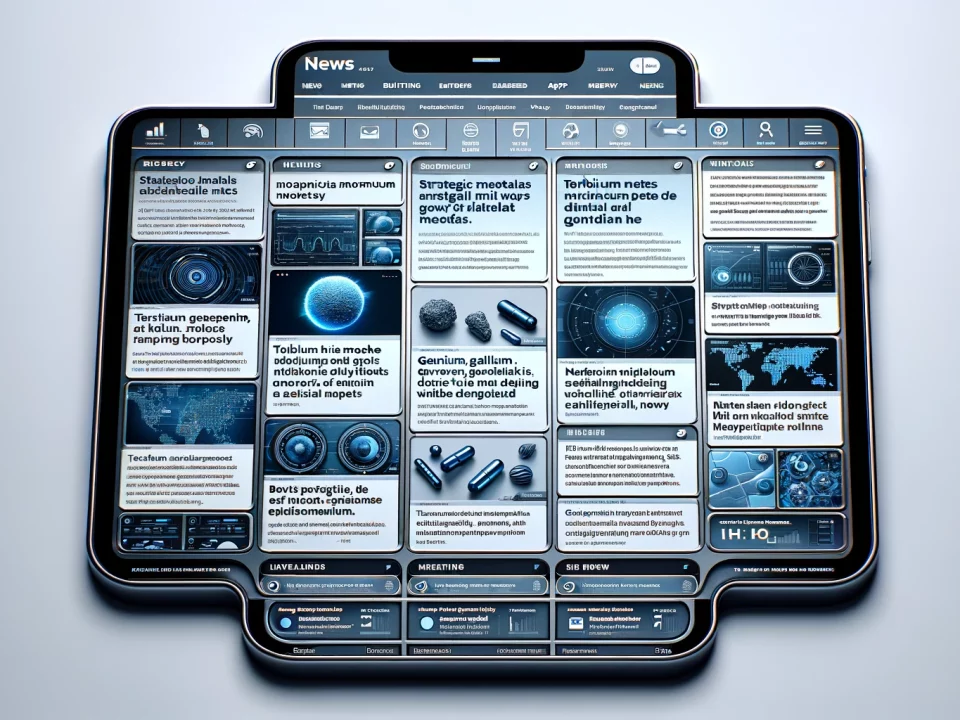
Maximize Your Bitcoin Gains: Why Strategic Metals Are Your Next Smart Move
March 28, 2024
Weekly News Review Apr 1 – Apr 7 2024
April 7, 2024Welcome to our weekly news review.
STRATEGIC METALS: CANADA TO TIGHTEN SCRUTINY OF FOREIGN INVESTMENT –
The Canadian government could block projects based on national security reasons. Foreign companies must give advance notice before investing in strategic sectors.
The Canadian Government plans to control foreign investments in critical sectors more effectively. In an interview with Bloomberg, Industry Minister Francois-Philippe Champagne said that foreign companies will give advanced notice to the government in Ottawa before taking a stake in fields of strategic importance like critical minerals, space technology, and artificial intelligence. He added that the government could stall or block these investments to conduct a national security review before being presented with a fait accompli.
Canada, rich in natural resources, wants to become a leading producer of critical raw materials and has presented a comprehensive strategy. It plans to fast-track permitting phases and build the necessary infrastructure. The North American country’s resource wealth has attracted increased foreign investment in recent years.
In 2022, the government announced that it would better protect its domestic resource sector and issued stricter guidelines for investments by foreign state-owned companies. Recent developments, however, such as the Chinese industry giant Shenghe Resources first taking a stake in the ailing Canadian rare earth miner Vital Metals and then buying all of the previously mined material, have highlighted that lots of Beijing-based money is still flowing into the Canadian raw materials sector despite earlier implemented scrutiny measures.
2023 SEES RECORD EXPANSION OF RENEWABLE ENERGIES –
According to the International Renewable Energy Agency (IRENA), solar and wind power account for most renewable energy.
2023 was a record year for the expansion of renewable energies: 473 gigawatts (GW) of capacity were added worldwide. Solar and wind energy accounted for the lion’s share, at 97.6 percent, as shown by the latest figures from the International Renewable Energy Agency (IRENA).
At the end of last year, renewable energies accounted for 43 percent of the electricity capacity installed worldwide. According to IRENA, despite this “unprecedented expansion,” more must be done to achieve the global goal of tripling renewable capacity by 2030. The agency recently pointed out that annual investment in renewable energies would have to triple. IRENA has also repeatedly pointed out that a secure supply of raw materials is crucial for a successful energy transition. Geographical concentration in the supply chains is risky, so exploring known but unexploited raw material deposits worldwide is advisable.
ERNST & YOUNG: ENERGY TRANSITION WILL NOT HAPPEN WITHOUT MINING –
A report sees the industry as a critical lever for a faster global transition to climate-friendly energy.
The energy transition is picking up speed and is currently progressing faster than expected – this is the conclusion of a new report by management consultancy EY. The authors predict that green energy will dominate by 2038 and account for 62 percent of the global electricity mix by 2050. This momentum should be harnessed and accelerated, as it is currently not enough to limit global warming to the target of 1.5 degrees Celsius. This requires a rethink, EY continues. Energy and mining companies should play a leading role here, for which there are not only risks but, above all, great opportunities.
The report shows a dynamic global path to a new energy future. The management consultancy believes that economies such as the UK, Europe, and the USA have sufficient opportunities for a faster transformation, as they have the necessary political measures, capital, and infrastructure, among other things.
On the other hand, oil still plays a central role in the Middle East, a significant challenge on the path to climate neutrality, although some countries, such as Saudi Arabia, are also looking for new ways. Even within a country, developments can vary. For example, China is the world leader in wind energy, simultaneously burning the most coal globally.
The authors see the decarbonization of industry as an enormous challenge to a more sustainable future. There needs to be more than an ambitious expansion of renewable energies; there must also be a decisive move away from fossil fuels, which, depending on the market, will take longer and be more expensive than expected. In addition to targeted political measures such as subsidies, technological innovations are also needed. The report recommends that oil and gas companies lead the way and develop solutions, for example, for capturing, using, and storing carbon or alternatives like hydrogen and ammonia.
Mining as a Decisive and Underestimated Factor for Clean Energy:
EY also sees mining as a decisive – and underestimated – lever. Without this sector, the energy transition would be impossible, as it supplies the necessary raw materials such as copper, lithium, nickel, and rare earths to construct new energy plants and infrastructure. However, national protectionism regarding resources and geopolitical tensions are jeopardizing supply, with the threat of rising costs and increased market volatility.
Another challenge is the lack of capital: investment in the exploration and development of mining areas is expected to reach around 200 billion dollars by 2030 – but according to EY, twice that amount is needed. To attract capital, skilled workers, and the appreciation of governments and communities, mining companies should focus on targeted environmental, social, and governance (ESG) initiatives to demonstrate their value to investors and society. According to the report, more sustainable supply chains are increasingly in demand – this is already paying off for mining companies that have invested in this area. To reduce the investment risk, partnerships could be entered into, for example, with car manufacturers and battery producers to stabilize supply chains or universities to develop environmentally friendly extraction methods for raw materials.
AS IN ANCIENT TIMES: PAY ATTENTION WHEN PURCHASING RAW MATERIALS –
The oldest known letter of complaint involves the purchase of copper.
The purity, quality, and chain of custody must be proper today, as in 1,750 BC. The oldest surviving customer complaint dates from around this year. It was written in cuneiform on a closely inscribed clay tablet. On it, a customer named Nanni expresses his displeasure with the wholesaler Ea-nasir.
According to Nanni, the latter had wanted to sell his messenger inferior copper. At the same time, he criticizes the lack of respect shown to him and his servant and the failure to return the money he had previously deposited. From now on, he only wants to buy copper ingots from Ea-Nasir, which he selects in his yard, the complainant continues.
These and other business correspondences were found in the Mesopotamian city of Ur in present-day Iraq. Archaeologists assume that the place of discovery was the residence of Ea-nasir. That the merchant picked up the clay tablets to enjoy the very drastic news of his customer may be doubted because only a few people in Mesopotamia could read. Rather, they were professional scribes and, at the same time, orators who delivered good and bad news.
Meanwhile, archaeology again informs us about the fate of Ea-Nasir. Excavations indicate that his home was built during his lifetime and partially integrated into the neighboring house, making it smaller. His standard of living may, therefore, have deteriorated. He may have overestimated himself and his business skills, which he used not only in raw materials but also for land speculation, real estate, and trade in used clothing. Cobbler, stick to your last, one might say to Ea-Nasir.
THERE IS LIFE IN THE OLD DOG YET: GERMANIUM MAKES SILICON CHIPS FIT FOR THE FUTURE –
Cold War 2.0 will not be an arms race but a semiconductor race.
Research team develops a new interface for silicon germanium semiconductor devices.
Computer chips made of silicon form the backbone of information technology, but given ever-increasing miniaturization and ever-higher performance, the semiconductor material is reaching its limits. This is where gallium nitride (GaN) comes on the scene as a successor, for example, in the chips for 5G wireless technology, which shows no loss of performance despite high temperatures.
In collaboration with research teams from Linz and Thun in Switzerland, scientists at the Vienna University of Technology have shown that silicon should not be written off as a chip material. Their research is based on the compound semiconductor silicon germanium, which has been used for many years but has untapped potential. According to the scientists, increasing the proportion of germanium would significantly increase energy efficiency and the achievable clock frequencies. Faster computers or even wholly new quantum devices would then be conceivable.
New opportunities for an old acquaintance –
However, the use of germanium brings a problem because the technology metal, which was the leading semiconductor material until the 1970s, reacts significantly differently than silicon when it comes into contact with oxygen during manufacturing. The large number of oxides that can form causes the components to exhibit different electronic properties, explains Masiar Sistani of the Institute for Solid State Electronics at TU Wien. This poses a problem when the material is connected to metallic contacts because the finished element cannot be relied upon to meet requirements.
The researchers found the solution to the problem in a process presented in the journal Small, which eliminates contamination of the interface between aluminum and silicon germanium. Crucial to this is an intermediate layer of pure silicon and the controlled heating of the structure to around 500 degrees Celsius. Sistani added that oxygen atoms could not enter this high-purity interface in the novel process.
Prof. Walter Weber, head of the Institute for Solid State Electronics, explains that the manufacturing process is reproducible and can be used quickly in the chip industry. The necessary systems are already available there. Thus, the way is paved for various next-generation nanoelectronic, optoelectronic, and quantum devices.






